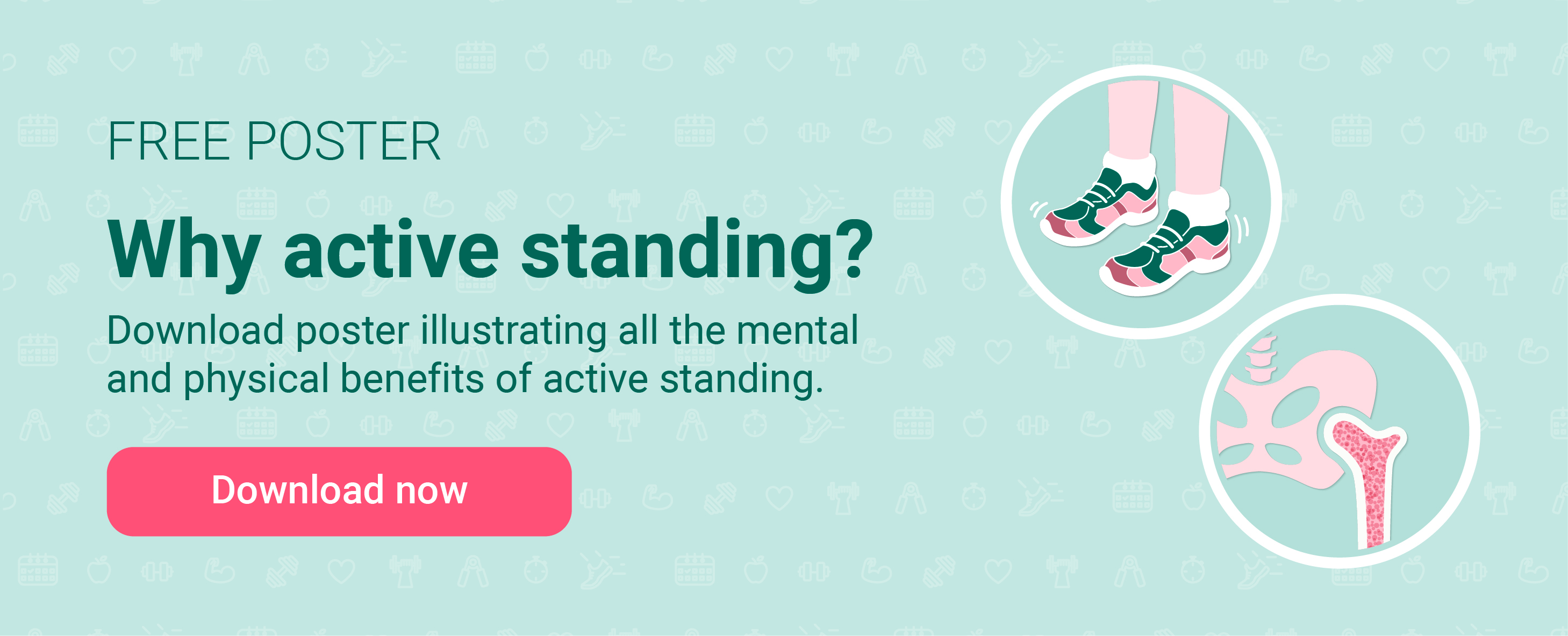Study: Blood biomarker changes during dynamic standing


The study included children with cerebral palsy GMFCS IV and V showed that several hormonal and inflammatory biomarkers are dysregulated in these children, but are postively affected by dynamic standing exercise in the Innowalk.
The study included 14 nonambulant children with cerebral palsy (CP), median age 13.5 year. Four participants with GMFCS level V and 10 with GMFCS level IV. The study concludes:- Dynamic standing exercise is an effective exercise method for nonambulant children with CP
- At base line the children had:
- Increased C-reactive protein (CRP)
- Low level of adrenocorticotropic hormone (ACTH)
- 30 minutes of dynamic standing significantly decreased the CRP level and increased ACTH level.
You find the full article “Acute and Long-Term changes in Blood-Borne Biomarkers in Response to Dynamic Standing in Nonambulant Children With Cerebral Palsy” Tibor V. Varga et al published in the peer review journal Pediatric Exercise Science here.
To give you a brief overview of the study, here’s an article summary:
Introduction
Cerebral palsy affects approximately 1.6 in 1000 live births and encompasses various challenges, including movement disorders, muscle tone issues, and several associated health problems. Among children with severe cerebral palsy who face limited mobility, physical inactivity poses a significant risk for future health complications. Traditional care methods involve static supported standing, but emerging technologies like the Innowalk offer dynamic standing exercise, showing promising results in improving various aspects of health and quality of life in nonambulant children.
Despite the known benefits of exercise for general health and cognition, research on its impact specifically within the cerebral palsy population remains limited. Some studies suggest that intense exercise positively affects cognitive function among ambulant children, while reduced physical activity in those with severe cerebral palsy correlates with lower brain-derived neurotrophic factor (BDNF) levels. Animal studies also hint at elevated BDNF levels in the brain after exercise.
The heterogeneity among nonambulant children with cerebral palsy challenges conventional treatment approaches, urging the need for innovative strategies. The Long-term Exercise Effects from Robotic Walking (LEER) project aims to explore the impact of exercise using the Innowalk on nonambulant children with cerebral palsy.
Aim of the study
In this study, the researchers aim to describe baseline characteristics of the participants and investigate acute and long-term changes in hormonal and inflammatory biomarkers in nonambulant children with CP in response to dynamic standing exercise.
Methods and participants
The study was conducted as a mixed-method exercise intervention study with a cross-over design, using the Innowalk for dynamic standing exercise with several exercise possibilities and different velocities. The study included:
- 14 nonambulant children with cerebral palsy (CP)
- GMFCS level 5 (n=4) and GMFCS 4 (n=10)
- Median age 13.5 year (12-15.5)
Outcome measurements
Physical activity levels before the study were assessed using an accelerometery, during a 30-minute exercise test with 5 different velocities for 6 minutes at each velocities using the Innowalk. The following were measured with an airtight mask:
- Oxygen consumption (VO2)
- Carbon dioxide production (VCO2)
- Minute ventilation (VE)
- Other related metrics (Oxycon Mobile)
In addition, heart rate was monitored throughout the test and non-fasting venous blood samples were collected before and immediately after 30 minutes of dynamic standing.
Exercise intervention
Each participant exercised 3 times per week for two 16 weeks periods starting with either high-intensity interval training (HIIT) or medium -intensity continuous training (MICT) with a washout period of 16 weeks between the two intervention periods.
![Blood_biomarkers[UKENG]](https://blog.madeformovement.com/hs-fs/hubfs/Blood_biomarkers%5BUKENG%5D.jpeg?width=864&height=203&name=Blood_biomarkers%5BUKENG%5D.jpeg)
Results
The study showed that children in the study had elevated inflammatory and hormonal imbalance at baseline. Exercise in the Innowalk for children with severe CP elevates ventilation, blood flow, oxygen consumption and metabolic equivalents (MET) and indicates that dynamic standing exercise is an effective way for nonambulant children to exercise.
High or extremely high levels of CRP were observed at baseline and a decrease was measured after just 30 minutes of physical activity in the Innowalk. In addition, a significant increase in ACTH levels were observed. An increase in ACTH is associated with better anti-inflammatory and anti-stress responses.
Read more: Static or Dynamic standing? New study reveals interesting data
Conclusion and implication
They study revealed that several hormonal and inflammatory biomarkers are dysregulated in children with severe cerebral palsy and as short as 30 minutes of dynamic standing exercise positively affects these biomarkers. Regular exercise using a dynamic standing device offers a feasible alternative to adopt regular exercise for children with severe cerebral palsy. However, the need for larger studies to confirm these findings and understand physiological changes better is needed. Moreover, there's an emphasis on assessing the long-term impact of regular exercise on patient-reported outcomes and clinical conditions like type 2 diabetes and cardiovascular diseases in people with cerebral palsy.

Rikke Damkjær Moen brings many years of experience as clinical physiotherapist to the Made for Movement team. Her mission is to ensure that everybody, regardless of mobility problems, should be able to experience the joy and health benefits of physical activity. As our Medical Manager, Rikke is passionate about sharing knowledge so that individuals with special needs, families, and clinicians can discover the possibilities and solutions provided by Made for Movement.
The F-words: Fitness, Function, Friends, Family, Fun and Future help practitioners, educators, and families to create a supportive and...
The new Innowalk Pro, an end-effector gait trainer for full-body robotic therapy, has recently been launched and is used in various...
It's a very special story marked by love, effort, and unstoppable determination. It's about Tom and his family. In the interview,...
Hear from us from time to time and learn new things
